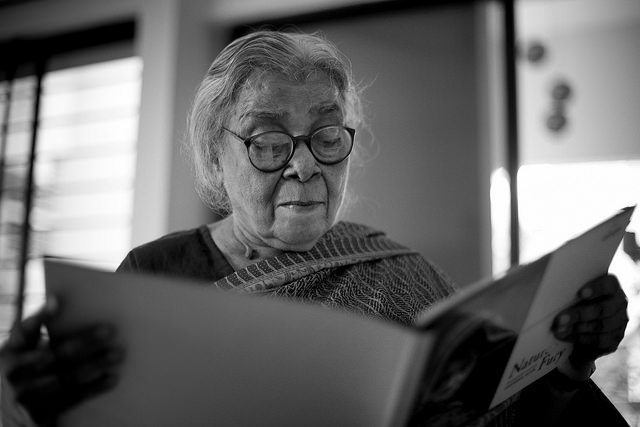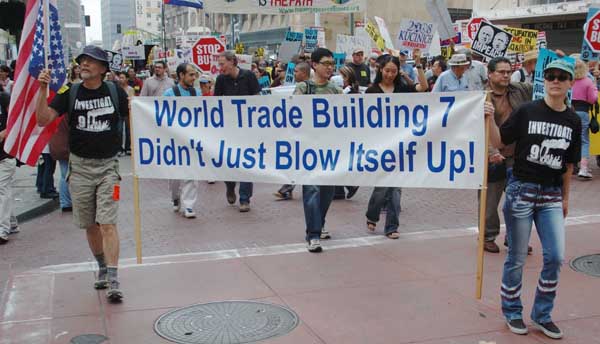MAHASWETA DEVI (JANUARY 14, 1926 -?JULY 28, 2016), WRITER AND SOCIAL ACTIVIST

Protocol wasn?t Didi?s thing.?Shoitan! (Satan) she would say lovingly. And then grab you and plonk you on her lap. The fact that both Rahnuma and I were far too old, and I was certainly much too heavy, to be sitting on anyone?s lap wasn?t something she worried much about. She didn?t care much for people?s age, and what other people thought, was something that had never bothered her. If you love someone, they sit on your lap. ?You have a problem with that??
Mahasweta Devi (Didi ? elder sister ? to all of us) had been a giant of a figure in South Asian literature for as far back as I can remember.?Jhansir Rani?(The Queen of Jhansi, 1956), Hajar Churashir Maa (Mother of 1084, 1975) and?Aranyer Adhikar?(The Occupation of the Forest, 1977) her powerful novel about the Santal uprising were what we knew this celebrated writer and activist by. That she was a tease and loved to sing, and didn?t mind the odd practical joke, was a side to her that had remained private. What should have been apparent was the rebel in her; her uncompromising stand for the oppressed, and her clear position as to which side of the fence she belonged. Continue reading “Didi. The Street Fighter”
Tag: Noam Chomsky
Noam Chomsky Weighs In On Syria Strike
By Ryan Grim in Huffington Post
WASHINGTON — A U.S.-led attack on Syria without United Nations support would be a war crime regardless of congressional approval, Noam Chomsky, the antiwar activist and author, said in response to President Barack Obama’s announcement that he would seek Hill approval. Continue reading “Noam Chomsky Weighs In On Syria Strike”
?The Most Dangerous Moment,? 50 Years Later
by Noam Chomsky and Tom Engelhardt, October 16, 2012
Here was the oddest thing: within weeks of the United States dropping an atomic bomb on a second Japanese city on August 9, 1945, and so obliterating it, Americans were already immersed in new scenarios of nuclear destruction. As the late Paul Boyer so vividly described in his classic book?By the Bomb?s Early Light, it took no time at all ? at a moment when no other nation had such potentially Earth-destroying weaponry ? for an America triumphant to begin to imagine itself in ruins, and for its newspapers and magazines to start drawing concentric circles of death and destruction around American cities while consigning their future country to the stewardship of the roaches.
As early as October 1945, the military editor of?Reader?s Digest?would declare the first atomic bomb ?dated,? and write, ?It is now in the power of the atom-smashers to blot out New York with a single bomb? Such a bomb can burn up in an instant every creature, can fuse the steel buildings and smash the concrete into flying shrapnel.? By 1947, in ?Mist of Death Over New York,? that staid magazine would have a description in ?realistic detail? of an atomic explosion in New York harbor. (?Within six weeks, 389,101 New Yorkers were dead or missing.?) In November 1945, in the ?36-Hour War,??Life?would feature a mushroom cloud rising over Washington in a surprise attack slaughtering 10 million Americans. That December, the?Wall Street Journalwould run a feature article imagining ?an attack by planes and missiles that could wipe out 98% of the population of the United States.? Continue reading “?The Most Dangerous Moment,? 50 Years Later”
When Chomsky Wept
I first met Noam Chomsky in Laos, where I showed him the devastating effects of U.S. air raids
CONCLUDING PART: Does the `blowback? paradigm explain 9/11?
Subscribe to ShahidulNews
CONCLUDING PART
Does the `blowback? paradigm explain 9/11?
Truth-ers disagree
By rahnuma ahmed

Before launching into my discussion of the `blowback? paradigm, let?s take a quick look at the findings from a new poll of New Yorkers: ?36% want a new investigation of the collapse of Building 7.
Apparently, 1 in 3 New Yorkers are unaware of Building 7?s collapse; ?but, of those who are, ?24% believe it was a `controlled demolition.?
Not `fire?, as the National Institute of Science and Technology?s 2008 report claims: ?[Building 7 is] The first known instance of fire [in history] causing the total collapse of a tall building.? NIST termed it `a new phenomenon.?
Conducted by the independent Siena Research Institute, the poll was commissioned by Remember Building 7, an advocacy campaign calling for a new investigation of the 47-storey skyscraper, which collapsed on 9/11.
36 percent of all respondents are inclined to believe critics — among them are Architects and Engineers for 9/11 Truth (AE911Truth), which has gathered over 1,500 signatures from architects and engineers — who say the government?s account of Building 7?s collapse is `physically impossible.?? Its fall, maintain these architects and engineers who have professional experience in designing and building skyscrapers, was caused by `controlled demolition.?
36 percent of those polled say, we are `not satisfied that we know the whole truth about that day, and it is time to get to the bottom of what happened.?
The `whole truth? and `getting to the bottom of what happened? is inextricably linked to paradigms. What was it that Thomas Kuhn had said of paradigms?.? it constitutes the underlying assumptions and intellectual structure upon which research and development in a field of inquiry is based (The Structure of Scientific Revolutions, 1962). Others have spoken of it being an interpretative framework, one which is guided by a set of beliefs and feelings about the world and how it should be understood and studied (Egon G. Guba ed, The Paradigm Dialog, 1990).
`Blowback? — explains professor Chalmers Johnson, author of the trilogy Blowback (volume 1 published in 2001), an academic for 30 years who also worked as a consultant for the CIA (1967-1973) but later became best known for his powerful critique of American imperialism — is a CIA term. It means retaliation or payback. `By blowback we do not mean just the unintended consequences of events. We mean unintended consequences of events that were kept secret from the American public, so that when the retaliation comes, they have no way to put it into context. Just as after 9/11, you have the president saying, “Why do they hate us?” The people on the receiving end know full well that they hate us because of what was done to them. It’s the American public that are in the dark on that subject? (interviewed by Harry Kreisler, January 29, 2004). Continue reading “CONCLUDING PART: Does the `blowback? paradigm explain 9/11?”

